
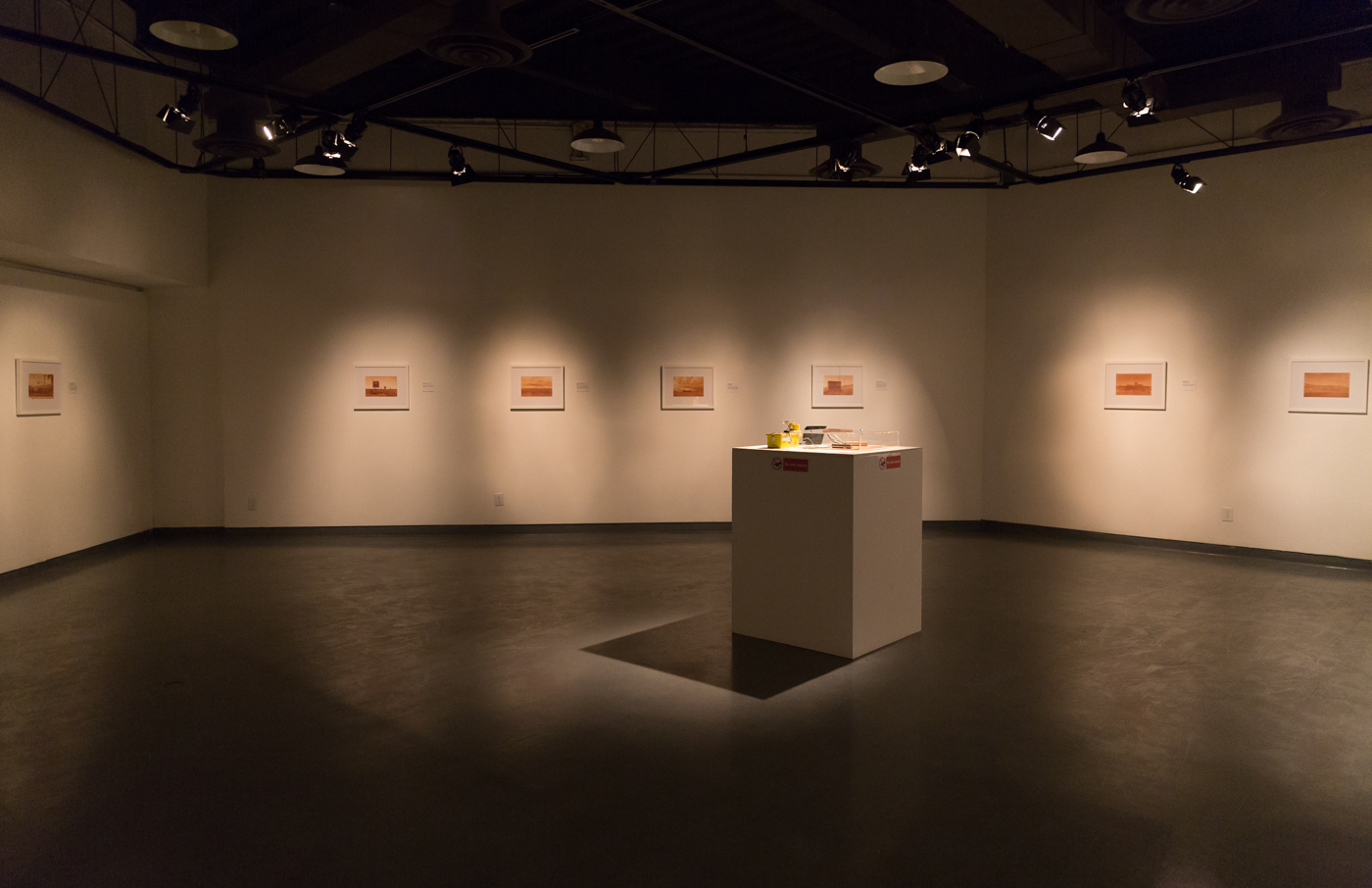
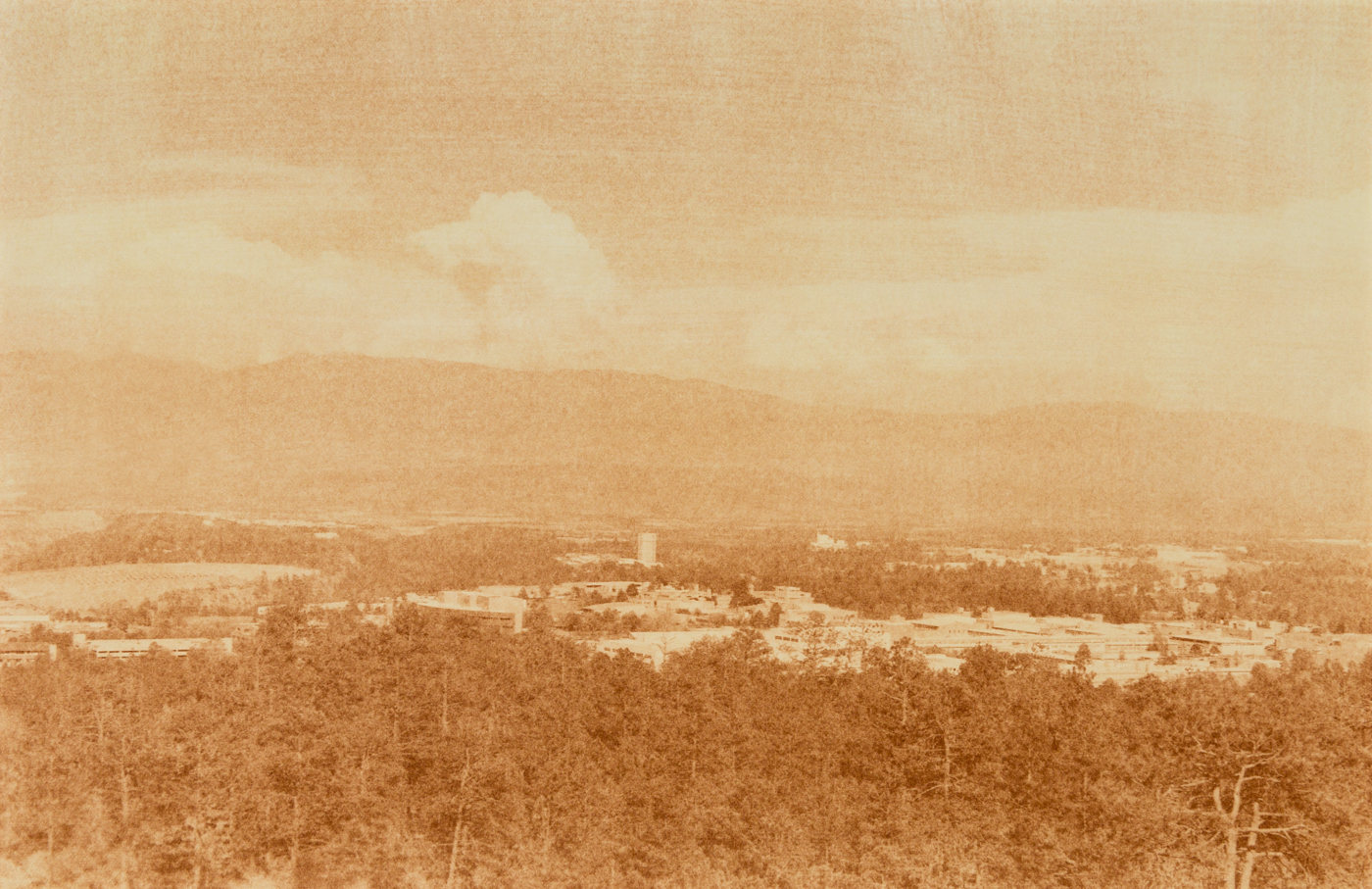
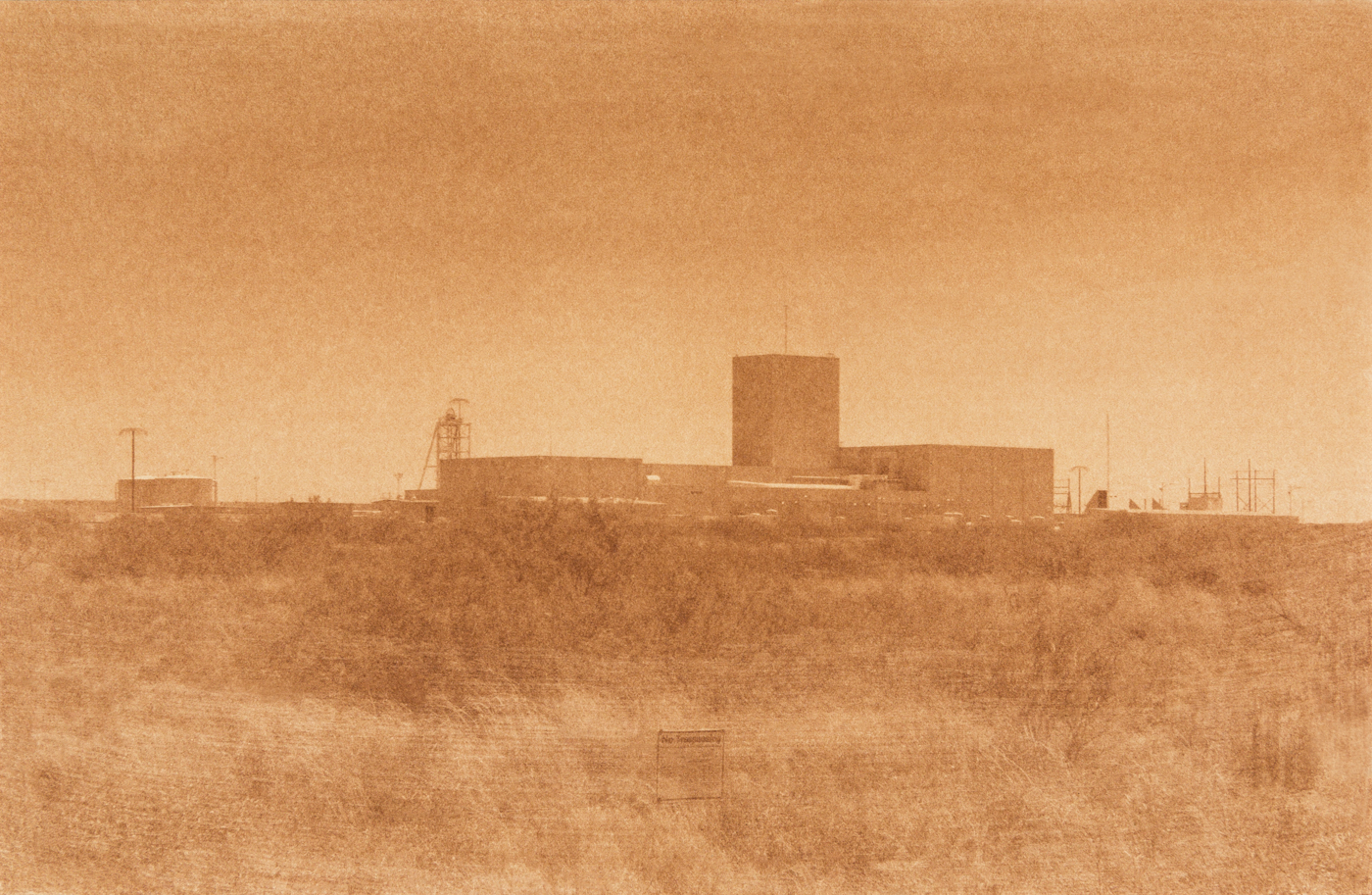
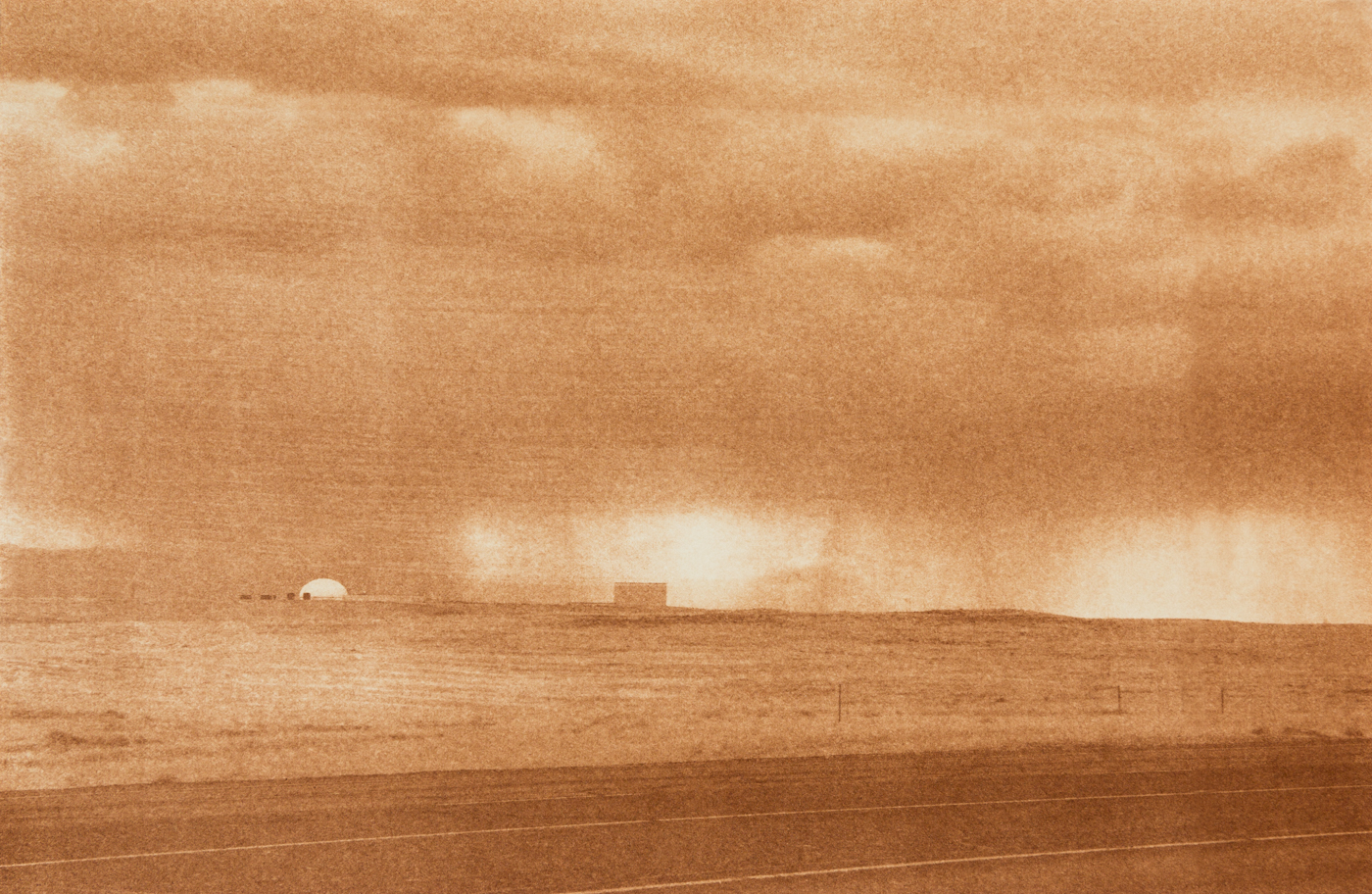
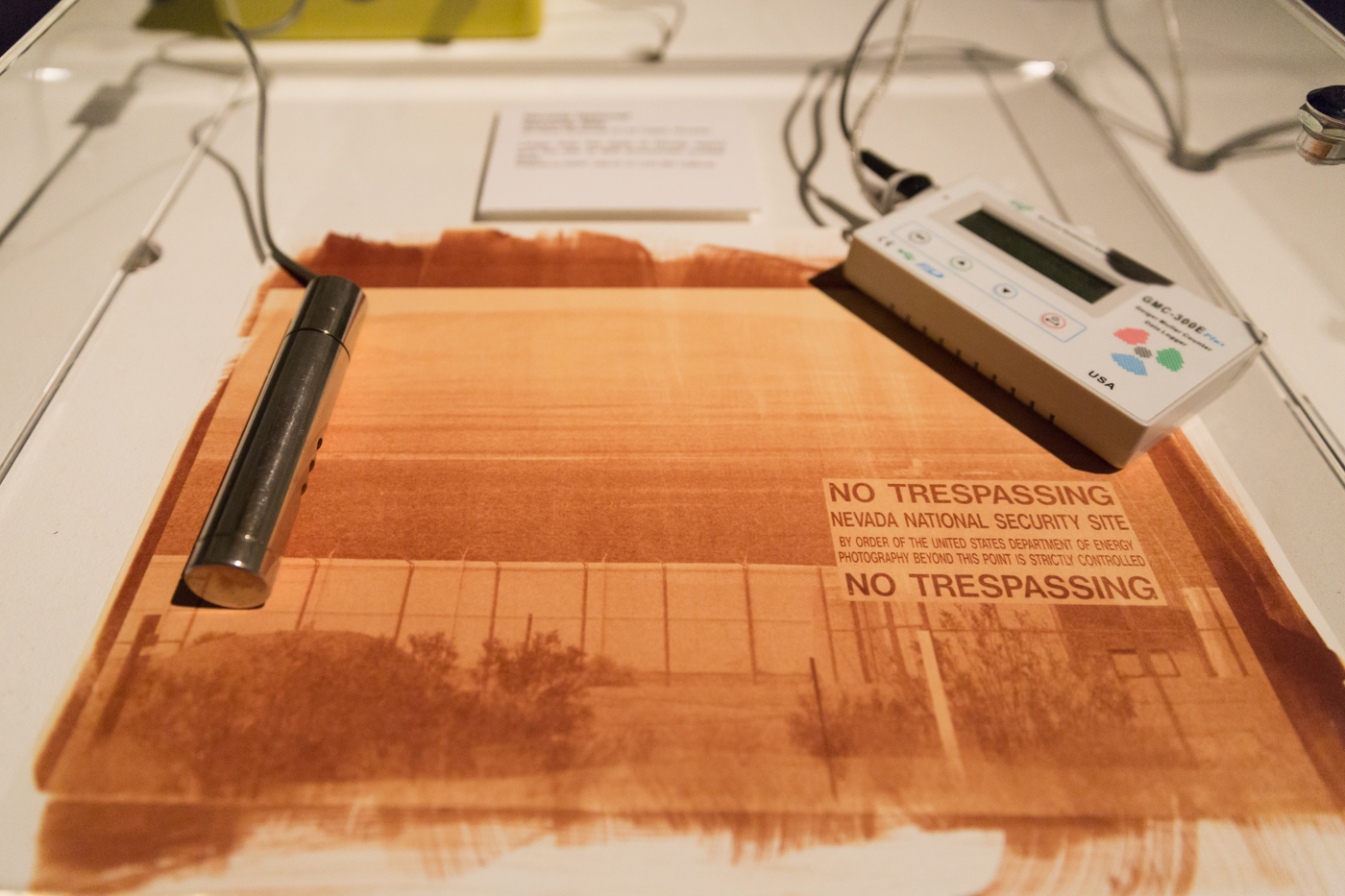

Artist's Statement
Abbey Hepner
Transuranic is a series of uranotypes, an obsolete nineteenth-century photographic process that uses uranium instead of silver to form the image. Uranium is an element that was used to make nuclear bombs and is the basic fuel for nuclear power reactors. These uranotypes were created from photographs captured at every nuclear site in the Western U.S. that transports radioactive waste to the Waste Isolation Pilot Plant (WIPP) in New Mexico. WIPP is the nation’s only permanent geological repository for radioactive waste, a place where waste is buried deep in the earth and intended to rest for 10,000 years.
Upon moving to New Mexico from Japan, where I participated in disaster relief work following the 2011 tsunami and nuclear meltdown, I set out to understand the impact of the nuclear industry on my immediate surroundings.Transuranic documents nuclear facilities from an outsider’s perspective. Places seemingly transparent in their operations, as indicated by signage, and still resting amongst us like scars on the landscape. The red and yellow hue of the uranotypes, likened to the color of the sky after the bomb was dropped on Hiroshima, was formed from the exposure of uranyl nitrate. This material presence negates the unassuming and banal nature of these sites and reminds us of the reality ever-present in the images and in our place of inhabitance.


